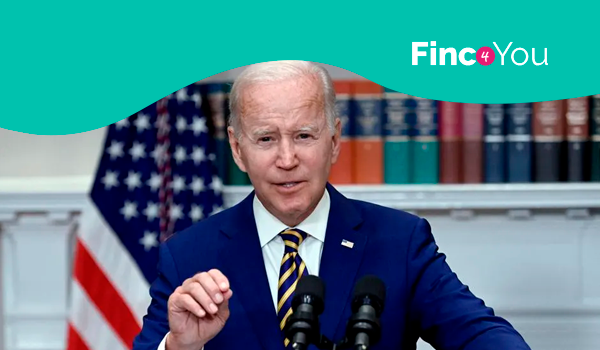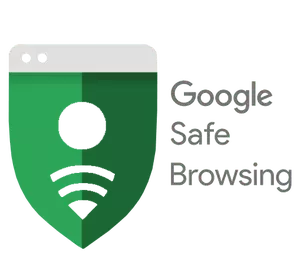
With the average student loan debt amounting to tens of thousands of dollars, it can be difficult to make ends meet while also paying off these loans. Fortunately, student loan forgiveness programs can offer relief to borrowers struggling to keep up with their payments.
However, navigating the world of student loan forgiveness can be confusing and overwhelming. With repayment looming, it’s important to stay up-to-date on the latest updates and changes to these programs. In this blog post, we’ll cover some essential updates and information you need to know about student loan forgiveness, so you can make informed decisions and successfully navigate the repayment process.
Overview of different student loan forgiveness programs
Navigating the world of student loan forgiveness can be overwhelming, especially as the time for repayment looms closer.
However, understanding the different student loan forgiveness programs available can help ease the burden and provide much-needed relief to borrowers.
There are several types of student loan forgiveness programs, each with its own eligibility criteria and specific requirements. It’s crucial to have a clear overview of these programs to determine which one may be applicable to your situation.
One popular program is the Public Service Loan Forgiveness (PSLF) program. This program is designed for individuals working in qualifying public service jobs, such as government or non-profit organizations. After making 120 qualifying payments, borrowers may be eligible to have their remaining loan balance forgiven.
Another option is the Teacher Loan Forgiveness program, dedicated to educators working in low-income schools or educational service agencies. Eligible teachers may have a portion of their Federal Direct Loans forgiven after completing five consecutive years of service.
For those working in the healthcare field, the Health Professions Loan Forgiveness program offers loan forgiveness to physicians, nurses, dentists, and other healthcare professionals. This program helps incentivize professionals to work in underserved areas or areas with a shortage of medical professionals.
Additionally, certain income-driven repayment plans, such as Income-Based Repayment (IBR), Pay as You Earn (PAYE), and Revised Pay as You Earn (REPAYE), offer loan forgiveness after a specific number of years of consistent payments.
Understanding the different student loan forgiveness programs is essential to determine your eligibility and plan your repayment strategy accordingly. It’s advisable to research each program thoroughly, consult with a financial advisor or student loan expert, and ensure you meet all the requirements before pursuing forgiveness options.
Updates and changes in student loan forgiveness programs
Staying informed about updates and changes in student loan forgiveness programs is crucial for anyone who is navigating the complex world of student loan repayment.
Over the years, there have been several updates and modifications to these programs, making it essential for borrowers to stay up-to-date in order to maximize potential benefits.
One notable update in recent years is the expansion of the Public Service Loan Forgiveness (PSLF) program. This program offers loan forgiveness to borrowers who have made 120 qualifying payments while working full-time for a qualifying employer, such as a government or non-profit organization. However, there have been changes to the eligibility requirements and application processes for PSLF, making it important for borrowers to understand the latest guidelines.
In addition, there have been updates to income-driven repayment plans, such as Income-Based Repayment (IBR), Pay As You Earn (PAYE), and Revised Pay As You Earn (REPAYE). These plans allow borrowers to make payments based on their income and family size, and any remaining balance after a certain number of qualifying payments can be forgiven.
Understanding the specific requirements and benefits of each plan is crucial for borrowers looking to potentially lower their monthly payments and qualify for forgiveness.
Key considerations before pursuing student loan forgiveness
Before jumping into the world of student loan forgiveness, there are several key considerations that borrowers should be aware of. While the prospect of having your student loans forgiven may sound enticing, it’s important to understand the potential implications and requirements involved in the process.
First and foremost, borrowers should carefully evaluate their eligibility for various forgiveness programs. Each program has specific criteria that must be met, such as working in a certain field or for a qualifying employer. It’s crucial to thoroughly research and understand the requirements before pursuing forgiveness options.
Another important consideration is the potential tax implications of loan forgiveness. In some cases, forgiven loan amounts can be considered taxable income, which could result in a significant tax bill.
Understanding the potential tax consequences and planning accordingly can help borrowers avoid any unexpected financial burdens down the road.
Additionally, it’s essential to evaluate the long-term impact of pursuing loan forgiveness. While having your loans forgiven can provide immediate relief, it may also impact your credit score and future borrowing ability. It’s crucial to weigh the pros and cons and consider the potential impact on your financial future before committing to a forgiveness program.
Steps to take to maximize eligibility for loan forgiveness

When it comes to student loan forgiveness, maximizing your eligibility is key. While the criteria for forgiveness programs may vary, there are steps you can take to increase your chances of qualifying. Here are some essential steps to consider:
1. Understand your options: Familiarize yourself with the different forgiveness programs available. Whether it’s Public Service Loan Forgiveness (PSLF), Teacher Loan Forgiveness, or other programs specific to your profession or circumstances, knowing the requirements and qualifications is crucial.
2. Make timely payments: Regular and on-time payments are crucial for loan forgiveness eligibility. Ensure that you consistently make your monthly payments in full and by the due date. Late or missed payments can impact your eligibility for forgiveness.
3. Explore income-driven repayment plans: Income-driven repayment plans can be a useful tool for maximizing your eligibility for forgiveness. These plans adjust your monthly payments based on your income and family size, making them more affordable. By enrolling in an income-driven plan, you can potentially qualify for loan forgiveness after a specified repayment period.
4. Consider working in a qualifying field: Some forgiveness programs are tied to specific professions or employment in certain sectors. If you’re interested in pursuing loan forgiveness, explore career paths or job opportunities that align with these programs. Working in public service, education, or non-profit organizations can often lead to eligibility for forgiveness.
5. Stay informed about policy changes: Loan forgiveness programs are subject to updates and policy changes. It’s essential to stay up to date with any new developments that may impact your eligibility. Regularly check government websites, subscribe to newsletters, or consult with a financial advisor who specializes in student loans to ensure you’re aware of any changes that may affect your repayment options.
Remember, each forgiveness program has its own requirements and specifications. Taking proactive steps to maximize your eligibility will put you on the right track towards potential loan forgiveness.
However, it’s crucial to thoroughly understand the terms and conditions of each program and seek professional guidance if needed to navigate the complexities of student loan forgiveness successfully.
Conclusion and final thoughts on navigating loan forgiveness
In conclusion, navigating student loan forgiveness can be a complex and daunting process, but with the right information and resources, it is possible to successfully navigate this journey. It is essential to stay updated on the latest updates and changes in student loan forgiveness programs as repayment looms.
Remember to carefully assess your eligibility for different forgiveness programs and understand the specific requirements and conditions associated with each option. Take advantage of available resources, such as online calculators and repayment assistance programs, to determine the best course of action for your individual situation.


